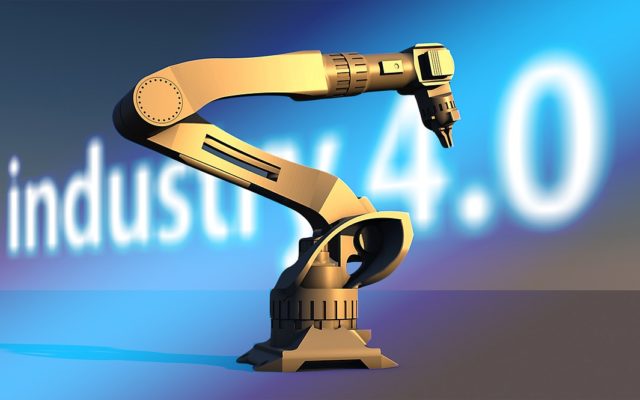January 17, 2018
This week in Las Vegas the future was brought to life at the largest electronics trade exhibition in the world, CES 2018. The show touches nearly every sector from automotive to logistics, from manufacturing to retailing and from healthcare to sport and leisure. More than 3,000 companies showcase their products and services, including around 900 start-ups that will potentially disrupt and change our lives.
Unsurprisingly, it is robots and automation which frequently take centre stage. And anyone who has observed their progress at the event will note that, each year, they seem to be more mobile, more intelligent and more human. Indeed, one of the highlights of this year’s show was a Scrabble-playing robot, exhibited by Taiwan’s Industrial Technology Research Institute (ITRI), which used artificial intelligence (AI), 3D vision recognition and eye-hand co-ordination technologies to play and interact with humans as well as learn from experience.
While BBC technology reporter Dave Lee seemed to acknowledge his defeat at the hands of the robot, he also quizzed ITRI’s Sean Wang on whether the company was creating something that ultimately could take away people’s livelihoods. Wang’s response was there is “a trade-off” and it is part of the “inevitable trend” of replacing human, including skilled human labour, with AI.
As I’ve always been keen to point out in previous blogs though, we can live and work together and fittingly one of the sessions at the event was entitled, Future of Work for both Humans and Machines. Bridget Karlin, CTO and VP at IBM Global Technology Services, reckons it is a case of “man plus machine, not man versus machine”.
“We’re in a transitional period and that the pace of transition can make people nervous,” adds Ned Finkle, VP of external affairs at visual computing technology company, NVIDIA. “But good employment can happen if policymakers can lean in.”
Indeed, it is perhaps Wang’s use of the word “inevitable” that generates this nervousness but we might have to accept he is right. While technology is causing disruption across every sector and therefore concern and angst in the C-suite, there is little doubt about the opportunities it is affording. And reading some of the keynote speeches from CES 2018 illustrates just how exciting and broad these opportunities could be.
Perhaps the most illuminating words about the future came not from a start-up but a 115-year-old company. Ahead of his keynote speech at CES 2018, Ford CEO Jim Hackett, described the automobile as the “ultimate disruptor” to human lives and our civic way of life but it was, of course, in a good way initially, giving people “extraordinary new freedom”. “It spawned new industries, thousands of new companies and drove generations of personal and economic growth,” he adds.
Hackett explains that what has happened since saw towns and cities designed around the car with roads taking over community centres as well as the streets and town squares where people once gathered. “The price we paid for the freedom to move was the creation of a world where roads were built for cars.” Yes, as it turned out, the automobile was, indeed, pretty disruptive then.
Hackett shared his fascinating vision at CES 2018. Recent years has seen the company gear itself up for the future and it is already playing a major part in emerging mobility sectors such as driverless cars as well as bike- and ride-sharing and it wants to help create cities that make human lives better. One of its underpinning future technologies announced at the exhibition is a platform that aims to simplify the flow of transit data.
We are at the dawn of a new year but also of the next industrial revolution and there is unavoidably going to be pain and disruption. But it is only when we accept the inescapability of the future that exciting things will occur so it’s time to free our minds and action the future today.
Browse
Article by channel:
Search
Everything you need to know about Digital Transformation
Subscribe
The best articles, news and events direct to your inbox
Read more articles tagged: Digital Disruption, Featured
Popular Now
The Case For Digital Transformation
The Digital Transformation Pyramid: A Business-driven Approach for Corporate Initiatives
The Case For Digital Transformation
An Executive Summary: Leading Digital by George Westerman, Didier Bonnet & Andrew McAfee
Strategy & Innovation
Target Operating Models & Roadmaps for Change
Delivery
Data Asset Management (DAM)
Strategy & Innovation
The Innovation Management Theory Evolution Map







